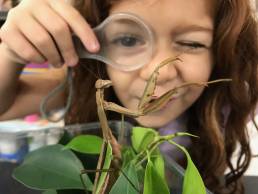Design Thinking
It is impossible to predict the problems our students will face as tomorrow’s leaders or to know exactly what specific knowledge they will need in order to solve these problems. We can, however, equip learners with habits of mind that will help them to tackle problems in a variety of contexts. This is accomplished primarily through our implementation of the design thinking process and our dedication to developing applied learning tasks for students. The process includes the following stages: ask, imagine, plan, create and improve.
Through the lens of design thinking, KIS students engage in innovation practices that involve making observations, empathizing with the problem or needs of a person/group, defining problems, ideating solutions, creating prototypes, testing solutions, and improving on failure points. In this way, the KIS tagline, “Design Your Future”, is made real for learners, empowering them to build a strong foundation for ownership and authentic transfer of their learning to new subjects and fields.
Design Center
Our Design Center is a space where all KIS Seoul Campus children enhance their learning, create prototypes of their ideas using a variety of engineering tools. Our variety of tools include 3D printers, power tools, coding tools, and recycled materials for prototype creation.

Making Learning Visible
Showcasing student work validates their learning and provides opportunities to share experiences and receive authentic feedback. In their pedagogical practice, our teachers utilize the Making Thinking Visible framework to engage students in deep thinking, reflection and planning.

Nature Classrooms
Our nature classroom spaces include areas on the rooftop playground and the chicken coop areas. Here, students are provided with a lab where teachers and students grow plants, make observations of the natural world, and collect data as they investigate ways to appreciate our natural world.

Project-Based Learning
Project-based learning gives students an authentic transdisciplinary learning experience, with the freedom to examine a complex question from multiple perspectives, and formulate a variety of solutions. Students are empowered to think independently, raise critical questions, and approach obstacles from a transdisciplinary perspective. Students discover possible answers to pressing community and global issues through research, analysis, experimentation, and evaluation.
